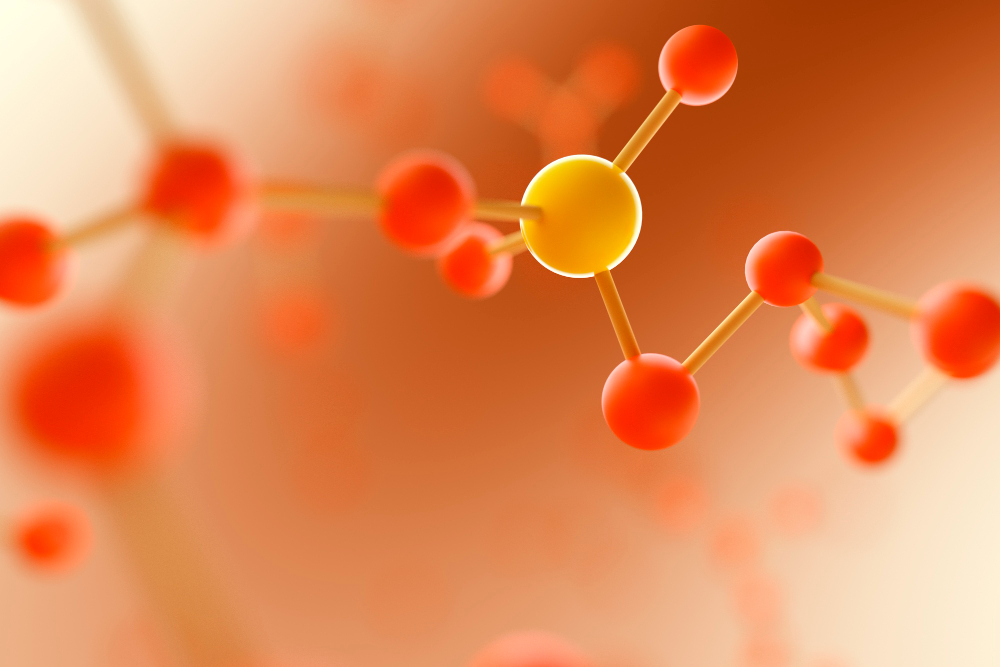Book on Whatsapp
9892101616
Lifestyle Changes to Improve your Thyroid Condition Detoxification of Liver
Liver
Mon Sep 25 2023
The liver performs the conversion of thyroid-based hormones and increases the lowered levels of metabolic rate during an underactive thyroid. So, try to eat foods that simultaneously enhance your liver functions and detoxification. Take foods like eggs, beetroot, apples, cinnamon, garlic, turmeric, and onions.
Cold Showers
Call it cold therapy because soaking yourself under a cold shower stimulates your adrenaline that boosts thyroid function or try a cold spray after a warm bath to support thyroid hormone production.
De-stress
It is highly imperative to reduce stress because it diminishes the production of Thyroid-stimulating hormones and inhibits the conversion of T4 to T3. Stress relief measures like meditation, yoga, and acupuncture will be helpful.
Sodium
Iodine is a component of thyroid hormone and a trace element too. Please ensure you have iodine food sources such as seafood and sea vegetables and use iodized salt. Opt for dairy and seafood. If you skip these, you may develop a deficiency.
Zinc
Zinc is a trace element necessary for the conversion of T4 to T3 and rich sources such as meat, nuts, seeds, lentils, and seafood.
Selenium
Selenium is a trace element required for the conversion of T4 to T3. Hence, opt for selenium food sources regularly to support this conversion and optimal levels. Sources such as walnuts, brazil nuts, mushrooms, avocados, cereal, and fish.
Tyrosine
It is an amino acid that acts as a precursor to the thyroid hormone. Meat, wheat, and dairy products are enriched with Tyrosine. Include avocados and pumpkin seeds when they are seasonal.
Essential Fats
Inculcating a portion of essential fats after each meal which includes extra virgin olive oil, unsalted nuts, flaxseed oil, avocados and oily fish will enhance thyroid hormone levels as the cell receptors get more capable to take up thyroid hormone.
Move your body
Exercising regularly during the morning can increase thyroid hormone levels as it allows stimulating your thyroid gland for thyroid hormone production along with boosting metabolic rate.
Low Glycemic Foods
Experts advise taking low glycemic foods to neutralize metabolic which is reduced with hypothyroidism leading to weight gain. Low glycemic foods involve green leafy vegetables, whole grains and berries.
Manipal TRUtest provides comprehensive diagnostic services backed by 70 years of assured quality and trust. Get Home Sample Collection and a well-qualified phlebotomist shall visit for complete procedure. Test Reports are available to be downloaded online within 24 hours.
Related Blogs

Liver
Symptoms That May Indicate High Triglyceride Levels
Triglycerides are fats in the blood that provide energy. But when levels stay high, they can raise the risk of heart disease, stroke, pancreatitis, and liver damage. Often, there are no early symptoms — yet certain signs may indicate dangerously high levels.
This article outlines the possible symptoms and health risks, helping you know when to get tested and seek treatment.
What Are Triglycerides?
Triglycerides are fats that the body stores after you eat. They are created when calories consumed are not immediately used for energy. These fats are then stored in fat cells and released later when needed between meals. While some triglycerides are necessary for bodily function, an excess can be harmful, especially when combined with other risk factors like high cholesterol or obesity.
A triglyceride level of less than 150 mg/dL is considered normal. Levels between 150–199 mg/dL are borderline high, 200–499 mg/dL are high, and 500 mg/dL or more is considered very high.
Symptoms That May Point to High Triglyceride Levels
Although high triglycerides are typically detected through a blood test, several physical signs and health issues may serve as red flags:
1. Abdominal Pain or Pancreatitis
Extremely high triglyceride levels (above 500 mg/dL) can lead to acute pancreatitis, a condition where the pancreas becomes inflamed. This can cause:
- Sudden and severe abdominal pain
- Nausea and vomiting
- Fever
- Loss of appetite
Pancreatitis is a medical emergency and should not be ignored.
2. Fatty Liver Disease
Fat accumulation in the liver is another possible outcome of elevated triglycerides. Symptoms may include:
- Fatigue
- Upper right abdominal discomfort
- Unexplained weight gain
- Mild jaundice in severe cases
Fatty liver disease can progress to liver inflammation and scarring if not addressed promptly.
3. Skin Changes (Xanthomas)
Xanthomas are yellowish, fatty deposits that form under the skin, particularly around the eyes, elbows, knees, or Achilles tendons. These are often associated with very high triglyceride or cholesterol levels and may appear as:
- Small, soft, yellowish bumps
- Painless lumps under the skin
- Clusters that grow over time
4. Uncontrolled Blood Sugar Levels
People with high triglycerides often have insulin resistance or type 2 diabetes. You may notice:
- Increased thirst and urination
- Fatigue
- Blurred vision
- Slow-healing wounds
These signs may indicate an underlying metabolic disorder that contributes to high triglyceride levels.
5. Obesity and Fatigue
Carrying excess weight, especially around the abdomen, is a major risk factor. Obesity not only increases triglyceride levels but also contributes to fatigue and sluggishness, particularly after meals high in sugar and fat.
Why Early Detection Matters
Even without visible symptoms, high triglyceride levels can increase the risk of heart disease, stroke, and pancreatitis. A simple lipid profile blood test can help detect the condition early, allowing timely lifestyle changes and treatment.

Liver
Why LFT Test is Essential for Preventive Healthcare
The Liver Function Test (LFT) is a crucial diagnostic tool in preventive healthcare, helping to assess the overall health and functionality of the liver. Since the liver plays a vital role in metabolism, detoxification, and digestion, regular monitoring can help detect potential issues before they develop into serious conditions. Many liver diseases, including fatty liver, hepatitis, and cirrhosis, remain asymptomatic in the early stages, making an LFT test essential for early detection and prevention.
Understanding the Liver Function Test (LFT)
The LFT test consists of a series of blood tests that measure key enzymes, proteins, and substances produced by the liver. These include:
- Alanine Aminotransferase (ALT) and Aspartate Aminotransferase (AST): Enzymes that indicate liver inflammation or damage.
- Alkaline Phosphatase (ALP): High levels may indicate bile duct or liver disorders.
- Bilirubin: Excess bilirubin may signal liver dysfunction or jaundice.
- Total Protein and Albumin: These proteins reflect the liver’s ability to produce essential substances for the body.
- Gamma-Glutamyl Transferase (GGT): Helps detect bile duct obstructions and liver diseases.
Why is the LFT Test Important for Preventive Healthcare?
1. Early Detection of Liver Diseases
Liver diseases often develop silently, showing symptoms only in advanced stages. An LFT test helps detect conditions like fatty liver disease, hepatitis, and cirrhosis early, allowing for timely medical intervention and lifestyle modifications.
2. Helps Monitor Alcohol-Related Liver Damage
Excessive alcohol consumption is one of the leading causes of liver damage. LFT helps monitor alcohol-induced liver stress, fatty liver, and cirrhosis, enabling individuals to take corrective actions before irreversible damage occurs.
3. Essential for People on Long-Term Medications
Certain medications, including painkillers, antibiotics, and cholesterol-lowering drugs, can affect liver function. Regular LFT tests help ensure that prolonged medication use is not causing liver toxicity or damage.
4. Prevents Complications in Chronic Conditions
People with conditions such as diabetes, obesity, and high cholesterol are at a higher risk of developing non-alcoholic fatty liver disease (NAFLD). An LFT test helps in tracking liver health and enables early intervention to prevent further complications.
5. Assesses the Impact of Diet and Lifestyle
Poor dietary habits, high sugar intake, and a sedentary lifestyle contribute to fatty liver and liver inflammation. Regular LFT testing helps individuals monitor the impact of their lifestyle choices and make necessary adjustments to improve liver health.
6. Detects Hepatitis Infections
Hepatitis B and C infections can cause long-term liver damage if not detected early. LFT tests help in the early identification of liver inflammation and viral infections, leading to timely treatment and better outcomes.
7. Ensures Safe Liver Function Before Surgeries
Before undergoing any major surgery, doctors may recommend an LFT test to ensure the liver is functioning properly. A healthy liver is essential for processing anesthesia and aiding post-surgical recovery.
Who Should Get an LFT Test?
An LFT test is recommended for:
- Individuals with a history of liver disease
- People with diabetes, obesity, or high cholesterol
- Those who consume alcohol regularly
- Individuals on long-term medications
- People experiencing unexplained fatigue, jaundice, or abdominal pain
- Anyone undergoing a routine health checkup
Conclusion
The LFT test is an essential part of preventive healthcare, offering early insights into liver health and helping to prevent serious complications. Regular liver function monitoring ensures timely intervention, lifestyle adjustments, and better long-term health outcomes. If you haven’t included an LFT test in your health checkup, now is the time to prioritize your liver health for overall well-being.

Liver
Revolutionary Non-Invasive Screening Tool for Liver Diseases Launched
An non-invasive screening tool for liver diseases has been launched and it is set to transform how these conditions are diagnosed. This innovative technology aims to detect liver diseases early, eliminating the need for uncomfortable and risky invasive procedures like biopsies.
Introducing the New Screening Tool
The newly launched tool uses advanced imaging techniques to evaluate liver health. It utilizes elastography, a method that measures the stiffness of liver tissue. When the liver is damaged or diseased, it often becomes stiffer. By assessing this stiffness, healthcare providers can identify potential issues such as fatty liver disease, fibrosis, and cirrhosis without the need for a tissue sample.
Why This Tool Matters
Liver diseases are a major health concern worldwide. Conditions like fatty liver disease, hepatitis, and cirrhosis can lead to serious complications if not detected early. Traditional diagnostic methods often involve invasive procedures that can be painful and require recovery time. The new screening tool presents a safer and more comfortable alternative for patients.
How the Screening Process Works
The screening process is simple and quick. Patients lie down while a small device is placed on their abdomen. This device sends sound waves into the liver to measure its stiffness. Results are usually available within minutes, allowing doctors to make timely decisions about any further testing or treatment needed.
Who Should Consider Getting Tested?
This screening tool is especially beneficial for individuals at higher risk of liver diseases, including:
- Individuals with obesity: Excess weight can lead to fatty liver disease.
- People with diabetes: Diabetes increases the risk of liver problems.
- Heavy drinkers: Prolonged alcohol consumption can damage the liver over time.
- Those with a family history of liver disease: Genetics can play a role in susceptibility to liver conditions.
If you fall into any of these categories or experience symptoms such as fatigue, abdominal pain, or jaundice (yellowing of the skin and eyes), it is advisable to discuss screening options with your healthcare provider.
Additional Testing Options
While the non-invasive screening tool is effective for initial assessments, further tests may be required if abnormalities are detected. Common follow-up tests include:
- Blood tests: To evaluate liver function and related markers.
- Imaging studies: Such as ultrasound or CT scans for detailed views of the liver.
- Liver biopsy: In certain cases, a biopsy may still be recommended to confirm a diagnosis.
Conclusion
The introduction of this non-invasive screening tool represents a significant advancement in the detection and management of liver diseases. This innovative approach not only enhances patient comfort but also encourages more individuals to get screened regularly, ultimately leading to better health outcomes in managing liver diseases.
